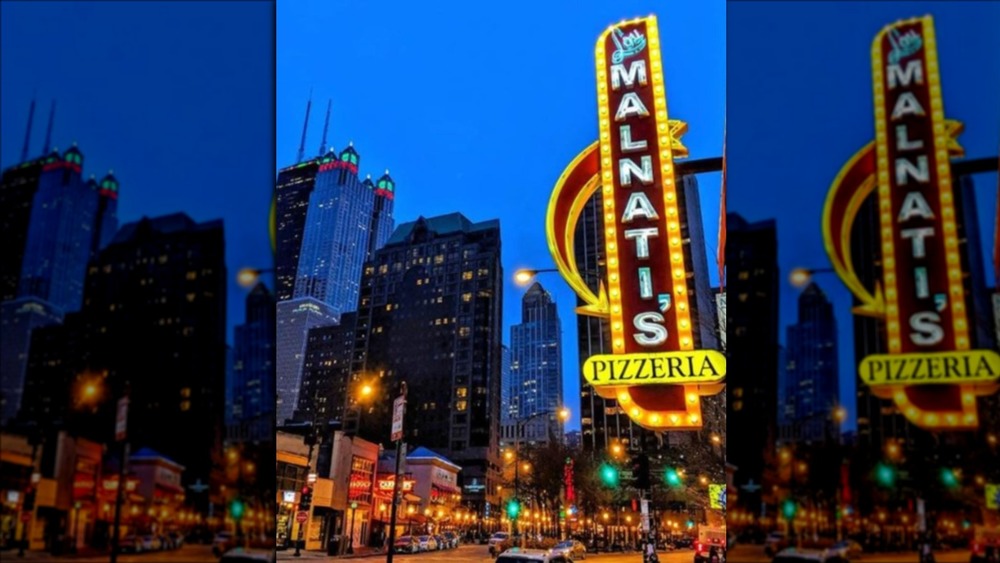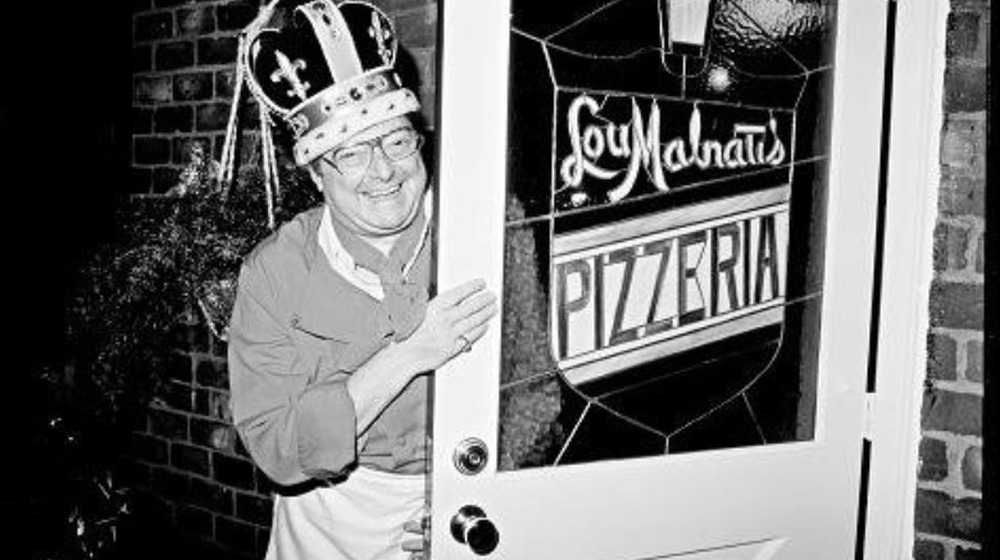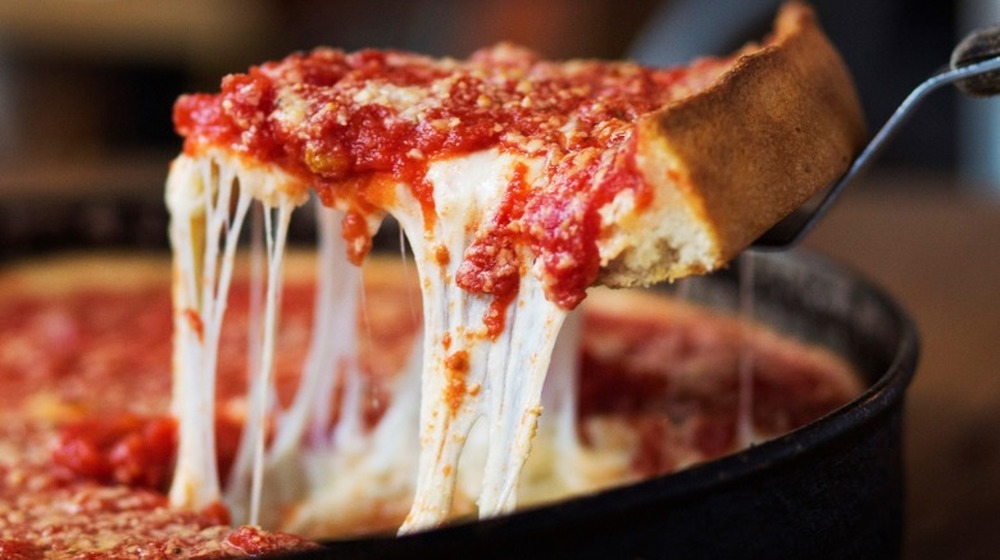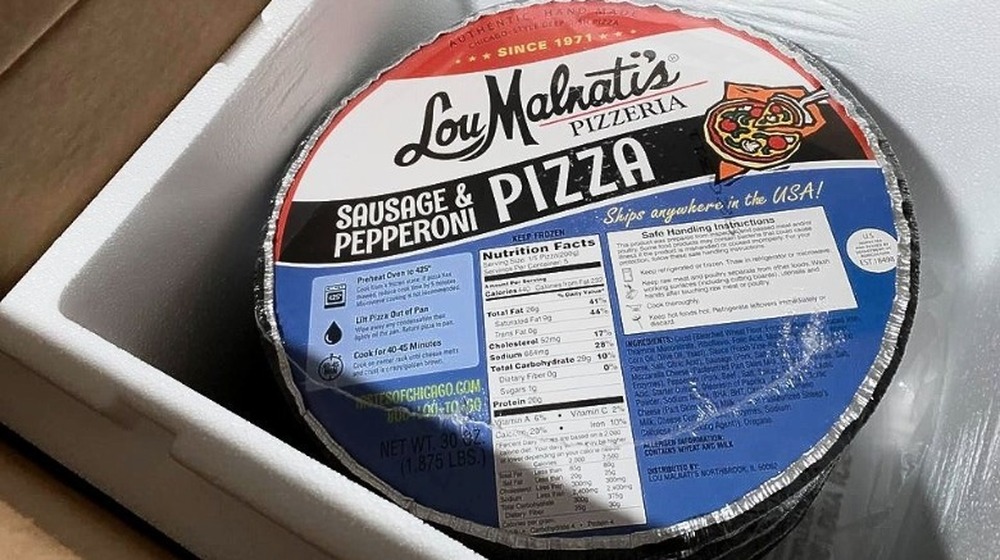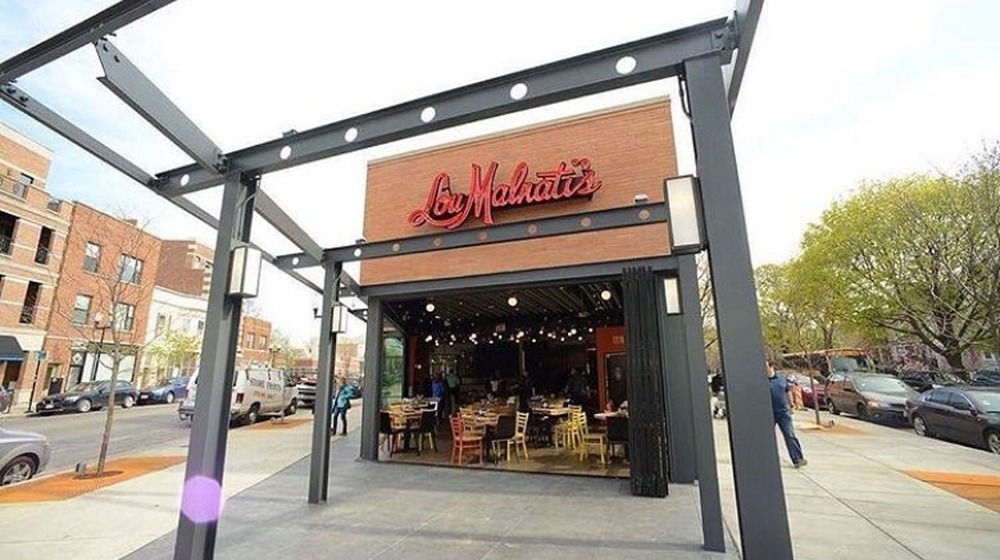The Untold Truth Of Lou Malnati's
Deep-dish pizza rules in Chicago, and one of the most influential makers of these delicious and decadent pies has been a Chicago legend since the 1970s when they opened their pizzeria in the small inner-ring suburb of Lincolnwood, Ill., according to the chain's website.
What made Lou Malnati's a Chicago pizza favorite? BBC Travel lauds the tangy tomatoes, rich cheese, and buttery crust which combine to make "perfect deep-dish harmony."
What is Chicago deep-dish pizza? Not to be confused with thick-crust pizza, which can look similar in their round pans, Chicago-style deep-dish pies actually have a thin, flaky crust that curves up the side of the pan (like an actual pie), according to Eater Chicago. In this crust, a thick layer of cheese, toppings (they specialize in sausage), and a thick, chunky tomato sauce are layered — in that order — so that the longer required baking time for this dense creation doesn't result in burned mozzarella.
So whether you're a Chicagoan or just planning a visit, here's everything you need to know about Lou Malnati's, which you should definitely experience while there.
Lou Malnati's had an unusual start
According to Enjoy Illinois, the pizza chain's founder, Lou Malnati, learned the pizza craft from his father, Rudy, who helped to create the deep-dish pizza in 1943 while working at Chicago's legendary Pizzeria Uno.
Lou Malnati's had a strange launch. As noted on the business's website, the first Lou's opened on March 17, 1971. The site notes that Lou was always amused that "an Italian restaurant opened in a Jewish neighborhood on an Irish holiday." To top it off, the opening was made even more noteworthy when a car crashed into the dining room that first evening. Not to be deterred, the Malnati family forged ahead, becoming a Lincolnwood favorite and going on to build a second location in Elk Grove Village.
Lou Malnati's almost went out of business, according to their website, when a massive road construction project near the restaurant kept customers away for nearly 14 months. The family's third location, located some 50 miles from the original pizzeria, closed on the heels of Lou's untimely death and just a year after its 1977 launch.
Takeout and delivery were key to success
After the failure of the third Lou Malnati's restaurant in the early 1980s, the Malnati family, led by Lou's widow, Jean, and his sons, regrouped and decided to switch to a primarily delivery and takeout business model. They began with a takeout location in Wilmette, Illinois, and to this day, most Lou Malnati's locations are takeout and delivery.
During this time, the Malnatis focused on their recipes, "doubling down on quality," according to the restaurant's website, and formulating a pizza that "could truly stand the test of time." The Malnatis even visited California farms every year to pick out their tomatoes. According to Enjoy Illinois, the Malnatis have sourced cheese from the same dairy farm in Wisconsin for more than 40 years, with the goal of quality and consistency. Lou Malnati's uses sliced mozzarella instead of shredded for more even coverage. The family also perfected their now-trademarked "Buttercrust," according to Enjoy Illinois. A proprietary blend of butter, flour, and seasonings make for a distinctive, biscuit-like base for their pies.
When the Malnatis decided to open another sit-down restaurant again in 1989, they did so in the suburb of Buffalo Grove, Ill. The pizza was so well known by then that customers lined up for hours to nab one of the 250 seats in Lou Malnati's Pizzeria.
Lou's has been shipping pizzas since the 1990s
Chicagoans who left the Midwest began to miss their favorite pizza, so in the 1980s, the Malnatis launched Lou Malnati's Priority Pizza, shipping their frozen pies across the country. The offering is still very popular. The traveling pies aren't cheap, however. A two-pizza package is $66.99 (via Lou Malnati's/Taste of Chicago).
An even more impactful initiative took place in the 1990s, according to the company. The Malnati family loves Chicago and its neighborhoods. While they enjoyed a great growth period in the 1990s, they decided to open an important location in the economically hard-hit North Lawndale area. While a risky business proposition, the goal was to help breathe new life and opportunities into the community, according to Lou Malnati's. The pizzeria not only created jobs in North Lawndale, but all of its profits fund initiatives that benefit the community, including children's educational programs.
They thrived during the recession
With the goal of opening more locations within the Chicago city limits, Lou Malnati's continued to grow and thrive in the new century, taking advantage of lower real estate prices during economic downturns, according to Lou Malnati's. In total, the family opened 28 locations between 2000 and 2016.
With the success of its long-distance delivery program, Lou Malnati's partnered with other popular Chicago restaurant and food brands, including the regional fast food favorite Portillo's and the iconic Eli's Cheesecake to create Tastes of Chicago, which ships Chicago foods across the country.
Today, Lou's sons Marc and Rick run the pizza chain, which, according to Lou Malnati's website, consists of 57 locations in Illinois, as well as recently-opened pizzerias in Wisconsin, Indiana, and Arizona.
According to JP Morgan Chase, Lou Malnati's is more than just a favorite pizza in Chicago. They are also a great employer. More than 200 employees have been with the company for more than 10 years and nearly 100 staff members have worked at Lou Malnati's for two decades. Marc Malnati calls the company a "second family." Community is also important to Lou Malnati's, which regularly gets involved in neighborhood organizations and charities, especially youth programs. Cancer charities are also important to Lou Malnati's, and since 2006, they have donated more than $3 million to cancer research causes.
Lou Malnati's is a Chicago legend. Planning a visit? No trip to Chicago would be complete without a slice of their deep-dish classic.
